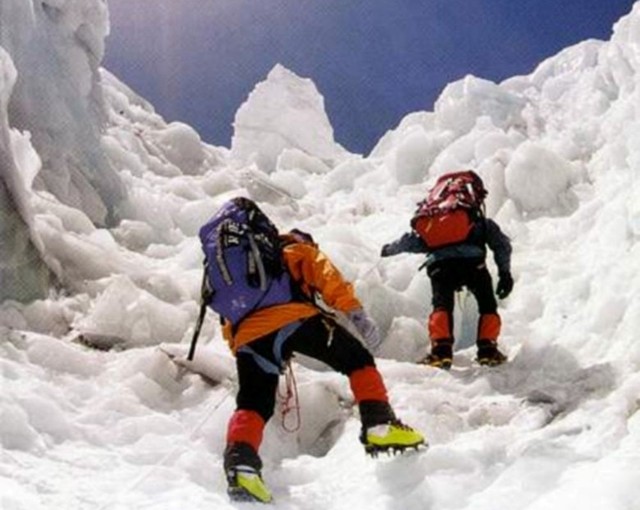
By Jae-Ha Kim
Chicago Sun-Times
May 8, 1998
![]()
A documentary with narration written by Tim Cahill and Stephen Judson.
Directed by Judson, Greg MacGillivray and David Breashears.
Running time: 40 minutes. No MPAA rating (no objectionable content).
Opening today at the Henry Crown Space Center’s Omnimax Theater at the Museum of Science and Industry, 57th Street and Lake Shore Drive.
After 12 hours of climbing, I had to force myself to concentrate,” says Jamling Norgay, a climbing leader in the latest Omnimax documentary “Everest.”
“As the pain gets worse, I feel worse than I’ve ever felt . . . without passing over to the other side,” Norgay says. “But up here in the clouds, I touched my father’s soul.”
This simple statement explained why he would risk his life to venture to the top of a 29,028-foot-high mountain where the temperatures fall to 100 degrees below zero and the chances of even reaching the top alive are slim.
The 10th member of his family to climb Mt. Everest, Norgay is the son of Tenzing Norgay, who in 1953 first reached the summit with Edmund Hillary. But even with his training and pedigree, the younger Norgay faced incredible danger – and watched helplessly as eight climbers lost their lives in the 1996 expedition.
What makes “Everest” such a stunning picture is that it transports the audience to another world where the athletes don’t just want to reach the top of the mountain. They are compelled to. We all have the ability to push our bodies and minds beyond our everyday capabilities. But how many of us actually channel that passion or drive into reality?
Narrated by actor Liam Neeson, the film offers some overwhelming visuals, and the viewer is never quite sure which climber is going to make it to the end alive. One refuses to rely on bottled oxygen because he enjoys the challenge of “just me and the mountain.”
Another is patched through the radio to his pregnant wife in New Zealand to name their unborn child. He dies shortly thereafter.
Although the 40-minute film flies by, the audience gets a feeling for how meticulously tedious the nine-week climb was. To reach certain parts of the mountain where there are dangerous gaps, the climbers had to tie ladders together horizontally before inching across to the other side.
“Everest” hinted at the geological aspects of the climb that could’ve made the expedition worthwhile for scientists. But complaining that carrying pieces of the mountain back to home base would be too heavy, the climbers and the filmmakers dismiss the idea.
The film ends with a shot of Norgay leaving pictures of his dead parents, his 10-year-old daughter and the Dalai Lama at the top of the summit as George Harrison’s reworked version of “Here Comes the Sun” plays in the background.
That scene gives you the feeling that Norgay’s little girl already is preparing for her turn to follow in her father’s footsteps.